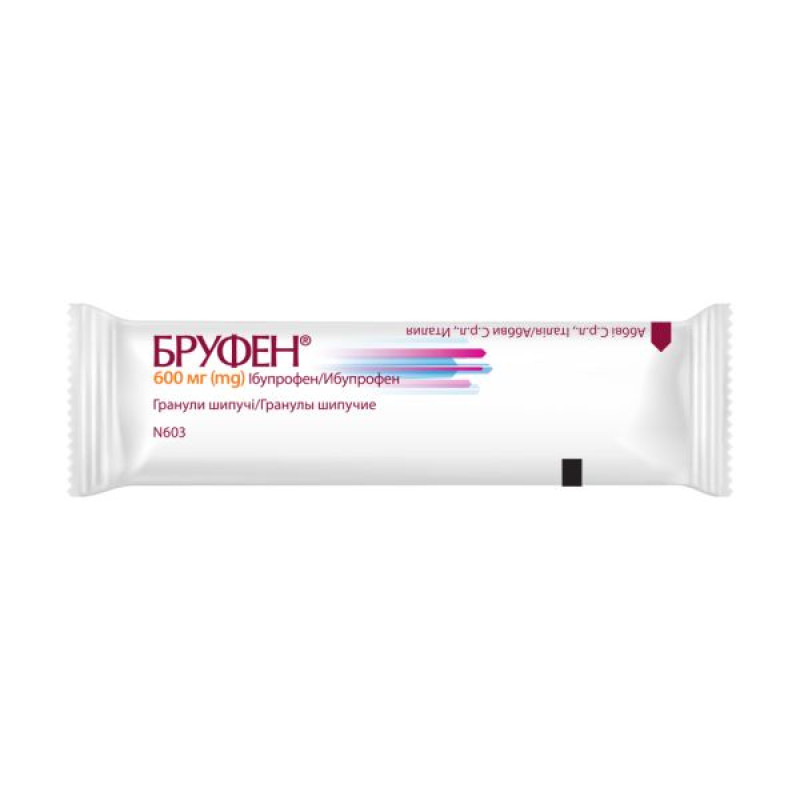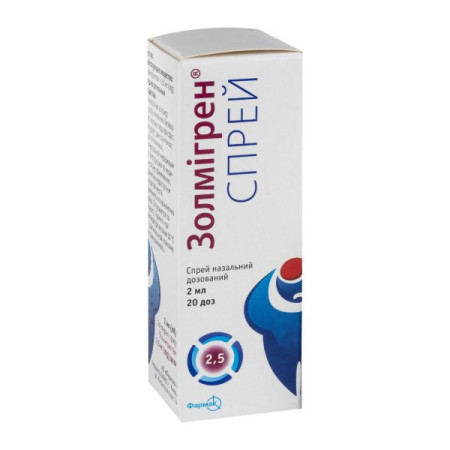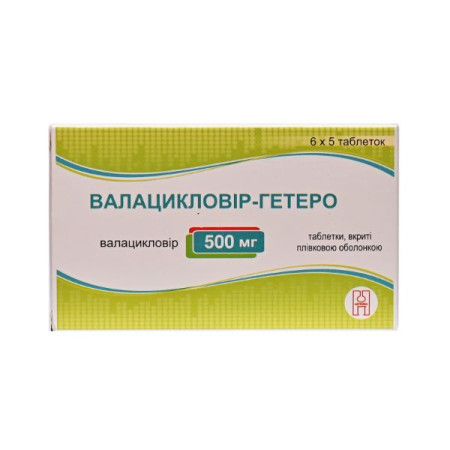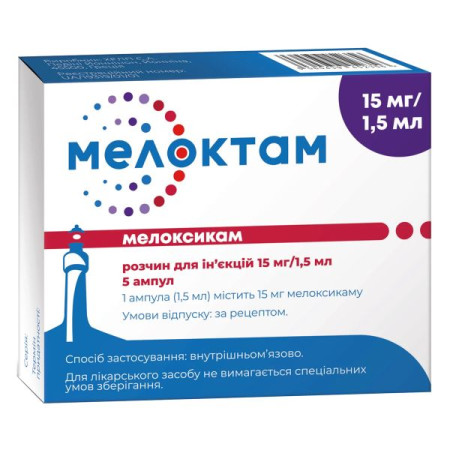Brufen effervescent granules 600 mg sachet No. 30

Instructions for Brufen effervescent granules 600 mg sachet No. 30
Composition
active ingredient: ibuprofen;
1 sachet contains 600 mg of ibuprofen;
excipients: microcrystalline cellulose, croscarmellose sodium, malic acid, sodium saccharin, sucrose, povidone, orange flavor, sodium lauryl sulfate, sodium bicarbonate, sodium carbonate anhydrous.
Dosage form
Effervescent granules.
Main physicochemical properties: small to large white granules with an orange odor.
Pharmacotherapeutic group
Nonsteroidal anti-inflammatory and antirheumatic drugs. Propionic acid derivatives. Ibuprofen. ATX code M01A E01.
Pharmacological properties
Pharmacodynamics
Ibuprofen is a propionic acid derivative, a nonsteroidal anti-inflammatory drug (NSAID) with analgesic, anti-inflammatory and antipyretic activity. The therapeutic effects of the drug are believed to be due to its inhibitory effect on the enzyme cyclooxygenase, which leads to a marked decrease in the synthesis of prostaglandins. These properties provide relief from symptoms of inflammation, pain and fever.
Experimental data suggest that ibuprofen may competitively inhibit the effect of low-dose acetylsalicylic acid/aspirin on platelet aggregation when both drugs are administered concomitantly. Some pharmacodynamic studies have shown that a single dose of ibuprofen 400 mg administered 8 hours before or 30 minutes after immediate-release acetylsalicylic acid/aspirin (81 mg) reduced the effect of acetylsalicylic acid/aspirin on thromboxane formation or platelet aggregation.
Although there are uncertainties regarding the extrapolation of the obtained data to the clinical situation, it cannot be excluded that regular long-term use of ibuprofen may reduce the cardioprotective effect of low-dose acetylsalicylic acid/aspirin. Clinically significant changes are unlikely with irregular use of ibuprofen (see section "Interaction with other medicinal products and other types of interactions").
Pharmacokinetics
Ibuprofen is rapidly absorbed from the gastrointestinal tract, with peak serum concentrations achieved within 1–2 hours after administration. The elimination half-life is approximately 2 hours.
Ibuprofen is metabolized in the liver to two inactive metabolites, which are excreted by the kidneys together with unchanged ibuprofen in pure form or in the form of conjugates. Renal excretion is rapid and complete. Ibuprofen is extensively bound to plasma proteins.
Indication
Rheumatoid arthritis, ankylosing spondylitis, osteoarthritis and other non-rheumatic (seronegative) arthropathies.
Non-articular rheumatic and periarticular lesions, such as shoulder scapular periarthritis (capsulitis), bursitis, tendonitis, tendosynovitis and low back pain; soft tissue injuries, such as sprains and strains of ligaments.
For the relief of mild to moderate pain, such as dysmenorrhea, dental and postoperative pain, and for the symptomatic relief of headache, including migraine.
Contraindication
Known hypersensitivity to the active substance or to any of the excipients.
History of asthma, urticaria or allergic reactions after taking acetylsalicylic acid/aspirin or other non-steroidal anti-inflammatory drugs (NSAIDs).
Severe heart failure (IV functional class according to the criteria of the New York Heart Association (NYHA).
Severe liver failure.
Severe renal failure (glomerular filtration rate <30 ml/min).
Conditions with an increased risk of bleeding or active bleeding.
History of gastrointestinal bleeding or perforation due to previous NSAID use.
Acute or previous ulcerative colitis, Crohn's disease, recurrent gastric ulcer or gastrointestinal bleeding (2 or more episodes of confirmed ulceration or bleeding).
Third trimester of pregnancy.
Interaction with other medicinal products and other types of interactions
Caution should be exercised when used concomitantly with the following drugs due to possible drug interactions observed in some patients.
Antihypertensives, β-blockers, and diuretics. NSAIDs may reduce the effect of antihypertensive drugs such as ACE inhibitors, angiotensin II receptor antagonists, β-blockers, and diuretics. Diuretics may also increase the risk of nephrotoxicity of NSAIDs.
Cardiac glycosides: NSAIDs may exacerbate heart failure, reduce glomerular filtration rate, and increase plasma levels of cardiac glycosides.
Cholestyramine: Concomitant administration of ibuprofen and cholestyramine may reduce the absorption of ibuprofen from the gastrointestinal tract. However, the clinical significance of this is unknown.
Lithium: NSAIDs may reduce the excretion of lithium.
Methotrexate: NSAIDs may inhibit the tubular secretion of methotrexate and reduce the clearance of methotrexate.
Mifepristone: A reduction in the efficacy of the medicinal product is theoretically possible due to the antiprostaglandin properties of NSAIDs. Limited data suggest that concomitant use of NSAIDs on the day of prostaglandin administration does not alter the effect of mifepristone or prostaglandin on cervical ripening or uterine contractility and does not reduce the clinical efficacy of medical abortion.
Other NSAIDs, including selective COX-2 inhibitors: Concomitant administration with other NSAIDs, including selective cyclooxygenase-2 inhibitors, should be avoided due to the risk of additive effects (see section 4.4).
Acetylsalicylic acid/aspirin. As with other NSAIDs, concomitant use of ibuprofen and acetylsalicylic acid/aspirin is generally not recommended due to the risk of increased adverse reactions.
Experimental data suggest that ibuprofen may competitively inhibit the effect of low-dose acetylsalicylic acid/aspirin on platelet aggregation when administered concomitantly.
However, despite the uncertainties regarding the possibility of extrapolating these data to the clinical situation, it cannot be excluded that regular long-term use of ibuprofen may reduce the cardioprotective effect of low-dose acetylsalicylic acid. There are no clinically significant changes with irregular administration of ibuprofen (see section "Pharmacodynamics");
Corticosteroids: Increased risk of gastrointestinal ulceration or bleeding when prescribed with NSAIDs.
Anticoagulants: NSAIDs may enhance the effects of anticoagulants such as warfarin.
Quinolone antibiotics: Animal data suggest that NSAIDs may increase the risk of seizures associated with quinolone antibiotics. Patients receiving NSAIDs and quinolones concurrently are at increased risk of seizures.
Sulfonylureas: NSAIDs may potentiate the effects of sulfonylureas. Hypoglycemia has been reported rarely in patients taking sulfonylureas during ibuprofen therapy.
Antiplatelet agents and selective serotonin reuptake inhibitors (e.g. clopidogrel and ticlopidine). Increased risk of gastrointestinal bleeding when taken with NSAIDs.
Tacrolimus: There may be an increased risk of nephrotoxicity when NSAIDs are administered to patients taking tacrolimus.
Zidovudine: NSAIDs increase the risk of hematological toxicity when administered concomitantly with zidovudine. There is evidence of an increased risk of hemarthrosis and hematoma in HIV-positive patients with hemophilia when ibuprofen is administered concomitantly with zidovudine.
Aminoglycosides: NSAIDs may reduce the excretion of aminoglycosides.
Herbal extracts. Ginkgo biloba may potentiate the risk of bleeding associated with NSAIDs.
CYP2C9 inhibitors. Co-administration of ibuprofen with CYP2C9 inhibitors may increase the exposure of ibuprofen (a CYP2C9 substrate). In one study, voriconazole and fluconazole (CYP2C9 inhibitors) were shown to increase the exposure of S(+)-ibuprofen by approximately 80–100%. A reduced ibuprofen dose should be considered when co-administered with CYP2C9 inhibitors, especially when prescribing high doses of ibuprofen to patients taking voriconazole or fluconazole.
Application features
General warnings
Undesirable effects can be minimized by using the lowest effective dose for the shortest period of time to control symptoms (see section “Method of administration and dosage” and gastrointestinal, cardiovascular risks below).
With prolonged use of any painkillers, headaches may occur, which should not be treated with increased doses of the drug.
Concomitant use of NSAIDs with alcohol may increase side effects associated with the active substance, particularly from the gastrointestinal tract or central nervous system.
Each sachet of the drug contains 3.3 g of sucrose per dose. This should be taken into account by patients with diabetes mellitus. Patients with rare hereditary problems of fructose intolerance, glucose-galactose malabsorption or sucrase-isomaltase insufficiency should not take this drug.
Each sachet contains 8.6 mmol (or 197 mg) sodium/dose. This should be taken into consideration by patients on a controlled sodium diet.
Elderly patients
Elderly patients have a higher incidence of adverse reactions to NSAIDs, especially gastrointestinal bleeding and perforation, which can be fatal.
Gastrointestinal bleeding, ulceration and perforation
NSAIDs should be used with caution in patients with a history of peptic ulcer and other gastrointestinal diseases, as their condition may be aggravated (see section "Contraindications").
The risk of gastrointestinal bleeding, ulceration or perforation is higher with increasing ibuprofen doses in patients with a history of ulcer, particularly if complicated by bleeding or perforation, and in elderly patients. Such patients should start treatment with the lowest effective dose.
The possibility of concomitant administration of protective drugs (e.g. misoprostol or proton pump inhibitors) should be considered in such patients, as well as in patients taking concomitant acetylsalicylic acid/low-dose aspirin or other drugs that increase the risk of gastrointestinal damage (see section “Interaction with other medicinal products and other forms of interaction”).
The use of ibuprofen with other NSAIDs, including selective cyclooxygenase-2 (COX-2) inhibitors, should be avoided due to an increased risk of ulceration or bleeding (see section "Interaction with other medicinal products and other types of interactions").
Patients, especially the elderly, with a history of gastrointestinal disease should report any unusual abdominal symptoms (especially gastrointestinal bleeding) during the initial stages of treatment.
Ibuprofen should be prescribed with caution to patients receiving concomitant treatment with drugs that may increase the risk of ulceration or bleeding, such as oral corticosteroids, anticoagulants such as warfarin, selective serotonin reuptake inhibitors or antiplatelet agents such as acetylsalicylic acid/aspirin (see section "Interaction with other medicinal products and other forms of interaction").
If gastrointestinal bleeding or ulceration develops in a patient receiving ibuprofen, the drug should be discontinued.
Respiratory disorders
Ibuprofen should be prescribed with caution to patients with or with a history of bronchial asthma, chronic rhinitis, allergic diseases, as ibuprofen has been reported to cause bronchospasm, urticaria, or angioedema in such patients.
Impaired heart, kidney and liver function
NSAIDs should be used with caution in patients with impaired renal, hepatic or cardiac function, as this may lead to deterioration of renal function.
Habitual concomitant use of such painkillers further increases this risk.
Patients with impaired renal, hepatic or cardiac function should use the lowest effective dose for the shortest period of time and renal function should be monitored, especially in the case of long-term treatment (see section "Contraindications").
Cardiovascular and cerebrovascular effects
Ibuprofen should be used with caution in patients with a history of heart failure or hypertension, as edema has been reported with ibuprofen. Clinical studies suggest that ibuprofen, especially at high doses (2400 mg/day), may be associated with a small increased risk of arterial thrombotic events (e.g. myocardial infarction or stroke). Overall, epidemiological studies do not suggest an association between low-dose ibuprofen use (i.e. ≤ 1200 mg/day) and an increased risk of arterial thrombotic events.
Patients with uncontrolled arterial hypertension, congestive heart failure (NYHA functional class II–III), diagnosed ischemic heart disease, peripheral arterial disease and/or cerebrovascular disease should be prescribed ibuprofen after careful analysis of the situation, and high doses of ibuprofen (2400 mg per day) should be avoided.
Careful consideration is also necessary before initiating long-term ibuprofen therapy in patients with risk factors for cardiovascular disease (such as hypertension, hyperlipidemia, diabetes mellitus, smoking), especially if high doses of ibuprofen (2400 mg per day) are required.
Dermatological effects
Serious skin reactions, some of which can be fatal, have been reported very rarely with NSAIDs. These include exfoliative dermatitis, Stevens-Johnson syndrome and toxic epidermal necrolysis. Patients are at greatest risk of developing these reactions at the start of treatment. In most cases, the reaction begins within the first month of therapy. Acute generalized exanthematous pustulosis (AGEP) has been reported following the use of ibuprofen-containing medicinal products. Ibuprofen should be discontinued at the first appearance of a skin rash, mucosal lesions or any other sign of hypersensitivity.
In exceptional cases, serious skin and soft tissue infections may occur in association with chickenpox. The role of NSAIDs in worsening these infections is currently unknown. Therefore, it is recommended that ibuprofen be avoided in the presence of chickenpox.
Caution should be exercised when initiating treatment with ibuprofen in patients with significant dehydration. There is a risk of impaired renal function, especially in children, adolescents and elderly patients with dehydration. As with other NSAIDs, prolonged use of ibuprofen may lead to renal papillary necrosis and other pathological changes in the kidneys. Renal toxicity has also been observed in patients in whom renal prostaglandins play a compensatory role in maintaining renal perfusion. The administration of NSAIDs to such patients may result in a dose-dependent decrease in prostaglandin formation and, secondarily, a decrease in renal blood flow, which may lead to renal failure.
Patients at high risk for this reaction include patients with renal impairment, heart failure, liver dysfunction, those taking diuretics and angiotensin-converting enzyme (ACE) inhibitors, and the elderly. Discontinuation of NSAIDs is usually accompanied by a return to pre-treatment status.
Hematological effects
Ibuprofen, like other NSAIDs, can inhibit platelet aggregation and prolong bleeding time in healthy volunteers.
Aseptic meningitis.
Aseptic meningitis has been reported rarely in patients treated with ibuprofen. Although aseptic meningitis is more likely to occur in patients with systemic lupus erythematosus and related connective tissue diseases, cases of aseptic meningitis have been reported in patients without these chronic diseases.
Masking the symptoms of underlying infections
As with other NSAIDs, ibuprofen may mask the symptoms of an infectious disease, which may delay the initiation of appropriate treatment and thereby complicate the course of the infectious disease. This has been observed in bacterial community-acquired pneumonia and bacterial complications of varicella. When ibuprofen is used for fever or for the relief of pain in an infectious disease, monitoring of the disease is recommended. In the context of outpatient treatment, the patient should consult a doctor if symptoms persist or worsen.
Ability to influence reaction speed when driving vehicles or other mechanisms
Taking ibuprofen may affect the reaction speed of patients, which should be borne in mind when engaging in activities that require increased concentration, such as driving or operating other mechanisms. The effect on the reaction speed is significantly increased when combined with alcohol.
After taking NSAIDs, undesirable effects such as dizziness, drowsiness, fatigue and visual disturbances are possible. If such effects occur during the use of NSAIDs, patients should not drive or operate other mechanisms.
Use during pregnancy or breastfeeding
Fertility
The use of ibuprofen may impair female fertility and is not recommended in women attempting to conceive. Women who have difficulty conceiving or who are undergoing investigation for infertility should consider discontinuing ibuprofen.
Pregnancy
Inhibition of prostaglandin synthesis may adversely affect pregnancy and/or embryo/foetal development. Epidemiological data suggest an increased risk of miscarriage, cardiac malformations and gastroschisis following exposure to a prostaglandin synthesis inhibitor during early pregnancy. This risk is believed to be dose- and duration-dependent. In animal studies, use of a prostaglandin synthesis inhibitor has been shown to result in increased pre- and post-implantation loss and embryo/foetal death. In addition, an increased incidence of various malformations, including cardiovascular, has been reported in animals treated with a prostaglandin synthesis inhibitor during organogenesis.
During the first and second trimesters of pregnancy, ibuprofen should be taken only if clearly needed. When ibuprofen is used by women planning a pregnancy, or during the first or second trimester of pregnancy, the dose should be kept as low and the duration of treatment as short as possible.
During the third trimester of pregnancy, all prostaglandin synthesis inhibitors may affect the fetus, resulting in:
cardiopulmonary toxicity (with premature closure of the ductus arteriosus and pulmonary hypertension); renal dysfunction, which may progress to renal failure with oligohydramnios.
At the end of pregnancy, prostaglandin synthesis inhibitors in the mother and newborn may lead to:
possible prolongation of bleeding time; suppression of uterine contractions, which may lead to delayed or prolonged labor.
Therefore, ibuprofen is contraindicated during the third trimester of pregnancy.
Labor and delivery
It is not recommended to take ibuprofen during labor and delivery.
The onset of labor may be delayed and its duration prolonged, with an increased tendency to hemorrhage in both mother and child.
Limited studies show that ibuprofen is excreted in breast milk in very low concentrations. Ibuprofen is not recommended for use in women who are breastfeeding.
Method of administration and doses
Doses
Side effects can be reduced by using the lowest effective dose for the shortest period of time necessary to control symptoms (see section "Special warnings and precautions for use").
Adults
The recommended dose of Brufen is 1200–1800 mg per day, administered in 2–3 divided doses. Some patients may require 600–1200 mg per day. In general, the maximum daily dose should not exceed 2400 mg, administered in several divided doses.
Elderly patients
There is an increased risk of serious adverse reactions when using the drug in elderly patients. If NSAIDs must be used, the lowest effective dose should be used for the shortest possible period of time. The patient should be regularly monitored for gastrointestinal bleeding during NSAID therapy. The dose should be adjusted individually in cases of impaired liver or kidney function.
Method of application
For oral use.
To achieve a faster effect of the drug, it can be used on an empty stomach. Patients suffering from gastrointestinal diseases should take the drug with meals.
Before use, the contents of one sachet should be dissolved in a glass of water. It is advisable to take during or after a meal.
There may be a temporary burning sensation in the mouth or throat when using Brufen; make sure the medicine is dissolved in sufficient water.
Children
Brufen in this dosage form is contraindicated for use in children.
Overdose
Toxicity
Symptoms of toxicity have not usually been observed at doses below 100 mg/kg in children and adults. However, supportive measures may be required in some cases. Symptoms of toxicity have been observed in children after doses of 400 mg/kg and above.
Symptoms
In most patients, symptoms of overdose develop within 4–6 hours after taking a significant amount of ibuprofen.
The most common symptoms of overdose include nausea, vomiting, abdominal pain, lethargy and drowsiness. Central nervous system (CNS) effects include headache, tinnitus, dizziness, convulsions and loss of consciousness. Nystagmus, metabolic acidosis, hypothermia, renal symptoms, gastrointestinal bleeding, coma, apnea and CNS and respiratory depression have been reported rarely. Cardiovascular toxicity has been reported, including hypotension, bradycardia and tachycardia.
In case of a significant overdose, renal failure and liver damage may develop. A significant overdose is usually well tolerated if no other drugs have been taken. In serious poisonings, metabolic acidosis may occur.
Treatment
There is no specific antidote for ibuprofen overdose. If the amount ingested exceeds 400 mg/kg, gastric lavage/emptying is recommended within one hour of ingestion, followed by symptomatic treatment. Activated charcoal should be administered within one hour of ingestion of a potentially toxic amount. Treatment should include maintaining a patent airway and monitoring cardiac function and vital signs until the patient is stable.
Ensure sufficient diuresis.
Kidney and liver function should be carefully monitored.
Patients should be observed for at least four hours after ingestion of a potentially toxic amount of the drug.
Frequent or prolonged seizures should be treated with intravenous diazepam. Other measures may be indicated according to the patient's clinical condition.
For the most up-to-date information, contact your local poison control center.
Adverse reactions
Adverse reactions to ibuprofen are similar to those with other NSAIDs.
Gastrointestinal: Gastrointestinal adverse reactions are the most common. Peptic ulcers, perforation or gastrointestinal bleeding, sometimes fatal, may occur, especially in elderly patients (see section "Special warnings and precautions for use").
Nausea, vomiting, diarrhoea, flatulence, constipation, dyspepsia, abdominal pain, melena, haematemesis, ulcerative stomatitis, gastrointestinal bleeding and exacerbation of colitis and Crohn's disease have been reported with ibuprofen (see section "Contraindications"). Gastritis, duodenal ulcer and gastric ulcer, gastrointestinal perforation have been observed less frequently.
When taking ibuprofen granules, a short-term burning sensation in the mouth or throat may occur.
Immune system disorders: Hypersensitivity reactions have been reported with ibuprofen. These include non-specific allergic reactions and anaphylaxis; airway reactivity including asthma, exacerbation of asthma, bronchospasm or dyspnoea; and various skin manifestations including rash of various types, pruritus, urticaria, purpura, angioedema and very rarely erythema multiforme, bullous dermatoses (including Stevens-Johnson syndrome, toxic epidermal necrolysis).
Rhinitis and aseptic meningitis (especially in patients with pre-existing autoimmune disorders such as systemic lupus erythematosus and mixed connective tissue diseases) with symptoms of stiff neck, headache, nausea, vomiting, fever or disorientation (see section "Special warnings and precautions for use").
Cases of exacerbation of skin inflammation caused by infection (e.g. development of necrotizing fasciitis) have been described during the use of NSAIDs. If signs of infection appear or worsen during the use of ibuprofen, the patient should immediately consult a doctor.
Skin and subcutaneous tissue damage
In exceptional cases, severe skin infections and soft tissue complications may occur in association with chickenpox (see also "Infections and Invasions").
Cardiovascular system
Edema, hypertension, and heart failure have been reported in association with NSAID treatment.
Clinical trial data suggest that the use of ibuprofen, especially at high doses (2400 mg per day), may slightly increase the risk of arterial thrombotic events (e.g. myocardial infarction or stroke) (see section "Special warnings and precautions for use").
The following adverse reactions are listed, which may be associated with ibuprofen, and are classified by frequency and MedDRA system organ class.
Adverse reactions are classified by frequency as: very common (≥ 1/10), common (≥ 1/100 to < 1/10), uncommon (≥ 1/1,000 to < 1/100), rare (≥ 1/10,000 to < 1/1,000), very rare (< 1/10,000), unknown frequency (cannot be determined from available data).
From the blood and lymphatic system: rare - leukopenia, thrombocytopenia, aplastic anemia, neutropenia, agranulocytosis, hemolytic anemia.
On the part of the psyche: infrequent - insomnia, anxiety disorders; rare - depression, confusion.
From the nervous system: frequent - headache, dizziness; infrequent - paresthesia, drowsiness; rare - optic neuritis.
Infections and infestations: uncommon - rhinitis; rare - aseptic meningitis (see section "Special warnings and precautions for use").
On the part of the organs of vision: infrequent - visual impairment; rare - toxic optic neuropathy.
From the side of the organs of hearing and vestibular apparatus: infrequent - hearing impairment, vertigo, tinnitus.
Hepatobiliary system: infrequent - hepatitis, jaundice, liver dysfunction; very rare - liver failure.
Skin and subcutaneous tissue disorders: common: rash; uncommon: urticaria, pruritus, purpura, angioedema; very rare: severe skin reactions (e.g. erythema multiforme, bullous reactions including Stevens-Johnson syndrome and toxic epidermal necrolysis). Frequency unknown: drug reaction with eosinophilia and systemic symptoms.
symptoms (DRESS syndrome), acute generalized exanthematous pustulosis (AGEP), photosensitivity reactions.
On the part of the urinary system: uncommon - toxic nephropathy in various forms, including tubulointerstitial nephritis, nephrotic syndrome and renal failure.
General disorders and administration site conditions: common: malaise/fatigue; rare: edema.
On the part of the immune system: infrequent - hypersensitivity; rare - anaphylactic reaction.
From the side of the cardiovascular system: very rare - heart failure, myocardial infarction (see section "Special instructions").
From the vascular system: very rare - arterial hypertension.
On the part of the respiratory system: infrequently - bronchial asthma, bronchospasm, dyspnea.
From the digestive system: frequent - dyspepsia, diarrhea, nausea, vomiting, abdominal pain, flatulence, constipation, melena, hematemesis, gastrointestinal bleeding; infrequent - gastritis, duodenal ulcer, gastric ulcer, ulcerative stomatitis, gastrointestinal perforation; very rare - pancreatitis; unknown frequency - colitis and Crohn's disease.
Expiration date
3 years.
Storage conditions
Keep out of the reach of children. Store at a temperature not exceeding 25 °C.
Packaging
30 sachets in a cardboard box.
Vacation category
According to the recipe.
Producer
Abbvie S.r.l.
Location of the manufacturer and its business address
C.R. 148 Pontina KM 52, SNS - Campoverde di Aprilia (loc. Aprilia) - 04011 Aprilia (LT), Italy.
There are no reviews for this product.
There are no reviews for this product, be the first to leave your review.
No questions about this product, be the first and ask your question.
















